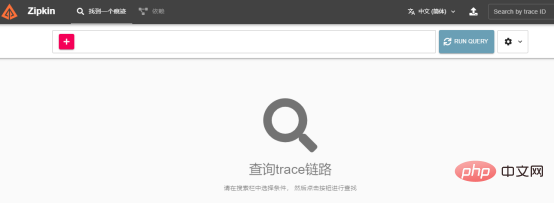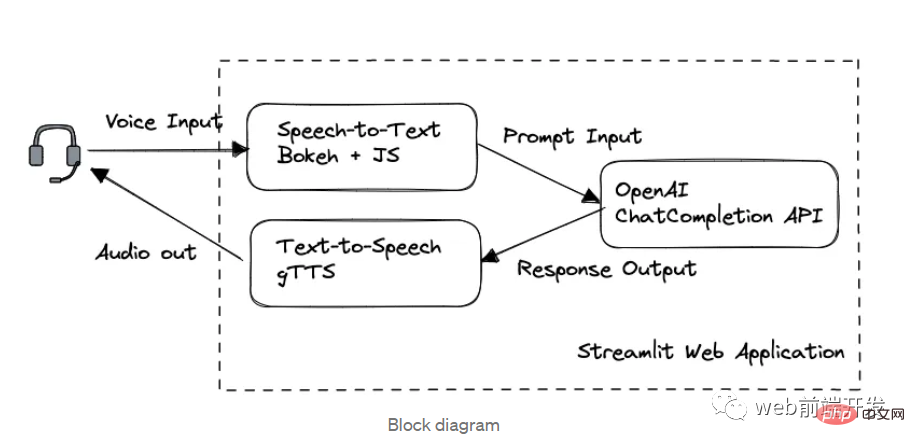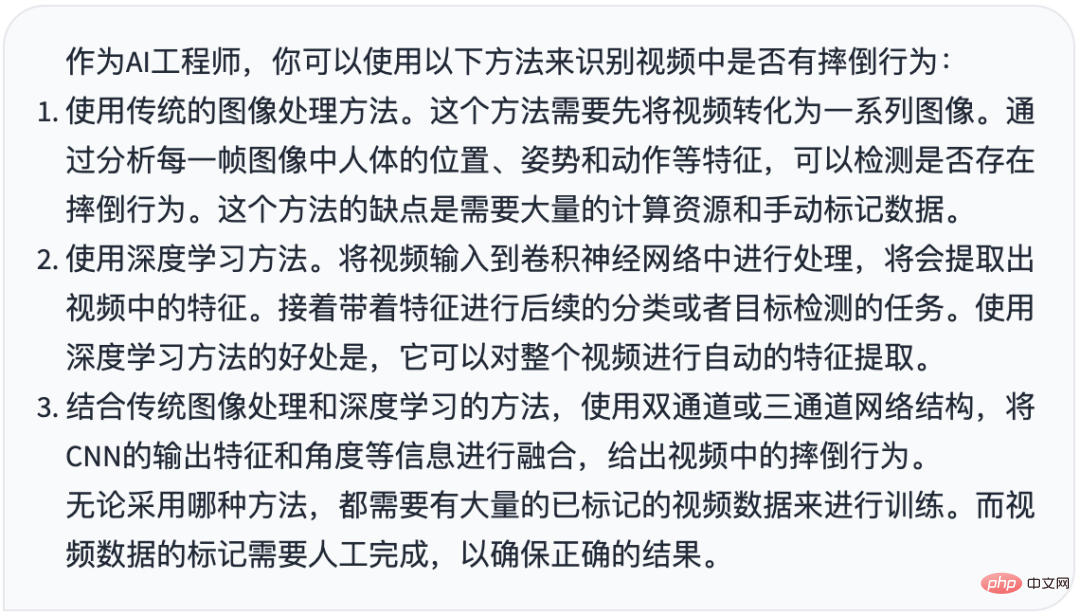 PHP Framework
PHP Framework Swoole
Swoole In-depth discussion of the basic principles and characteristics of swoole development functions
In-depth discussion of the basic principles and characteristics of swoole development functionsDeeply explore the basic principles and characteristics of Swoole development functions
Swoole is an asynchronous, concurrent, high-performance network communication engine based on PHP. It has many unique features and functions, making it easier for developers to to build high-performance, high-reliability network applications. This article will delve into the basic principles and features of Swoole, and provide some code examples to help readers better understand and use Swoole.
1. Basic Principles
The bottom layer of Swoole is developed based on C language and is provided to developers through PHP extension. It uses event-driven and asynchronous non-blocking design ideas to achieve high-performance network communication through epoll and signal mechanisms. Swoole makes full use of the characteristics of the PHP language at the extension level and provides many friendly APIs and development tools, making it easier for developers to write high-performance network applications.
The basic principles of Swoole can be briefly summarized in the following steps:
- Start the Swoole server: Developers use the Server class provided by Swoole to create a server instance and set some basic configurations , such as the listening port, the number of working processes, etc.
- Register some event callback functions: By calling the callback function provided by Swoole, monitor the occurrence of some key events during the running of the server, such as connection establishment, data reception, connection closing, etc.
- Event loop mechanism: After the server is started, Swoole will enter an event loop and monitor the occurrence of events in the loop. When an event occurs, Swoole will call the corresponding event callback function for processing according to different event types. This event-driven mechanism enables the server to efficiently handle a large number of concurrent requests.
- Process management and communication: Swoole's server can handle requests by setting up multiple Worker processes. Each Worker process is an independent process and can handle client requests independently. These Worker processes can exchange and synchronize data through the communication mechanism provided by Swoole, thereby achieving more efficient processing and resource utilization.
2. Features and functions
- High performance: Swoole adopts an asynchronous non-blocking design mode and uses event-driven and multi-process mechanisms to efficiently handle a large number of Concurrent requests. Compared with the traditional synchronous blocking mode, Swoole's performance improvement is very obvious, and it can greatly improve the concurrency capability of the server.
- Support TCP/UDP/HTTP/WebSocket and other protocols: Swoole provides complete protocol support and can handle various types of network requests. Developers only need to choose the corresponding protocol according to their needs without caring about the underlying details.
- Powerful asynchronous IO capabilities: Swoole supports asynchronous IO operations and can handle a large number of IO requests without blocking the main process. This is a very important feature for network applications and can improve the response speed and throughput of the application.
- Built-in advanced components and tool libraries: Swoole provides many commonly used advanced components and tool libraries, such as timers, thread pools, message queues, etc. These components and tool libraries can help developers write complex network applications more easily and avoid reinventing the wheel.
The following is a simple sample code that shows how to use Swoole to create a simple TCP server and handle client requests:
<?php
// 创建服务器实例
$server = new SwooleServer("127.0.0.1", 9501);
// 设置一些基本的配置
$server->set([
'worker_num' => 2,
]);
// 注册连接建立事件回调函数
$server->on('connect', function ($server, $fd) {
echo "Client {$fd} connected." . PHP_EOL;
});
// 注册数据接收事件回调函数
$server->on('receive', function ($server, $fd, $fromId, $data) {
echo "Received data from client {$fd}: {$data}" . PHP_EOL;
$server->send($fd, "Server: Hello, client {$fd}!");
});
// 注册连接关闭事件回调函数
$server->on('close', function ($server, $fd) {
echo "Client {$fd} closed." . PHP_EOL;
});
// 启动服务器
$server->start();The above code creates a simple TCP The server listens on port 9501 of 127.0.0.1. When client connection establishment, data reception and connection closing events occur, the corresponding callback function will be triggered for processing. The server sends data to the client by calling the $server->send($fd, $data) method. In this way, we have implemented a simple TCP server.
Summary:
This article deeply explores the basic principles and characteristics of Swoole development functions, and provides some code examples to help readers better understand and use Swoole. As a high-performance network communication engine based on PHP, Swoole has many unique features and functions, making it easier for developers to build high-performance, high-reliability network applications. By learning and using Swoole, we can better cope with high-concurrency network environments and improve application performance and efficiency.
The above is the detailed content of In-depth discussion of the basic principles and characteristics of swoole development functions. For more information, please follow other related articles on the PHP Chinese website!
 Nuitka简介:编译和分发Python的更好方法Apr 13, 2023 pm 12:55 PM
Nuitka简介:编译和分发Python的更好方法Apr 13, 2023 pm 12:55 PM译者 | 李睿审校 | 孙淑娟随着Python越来越受欢迎,其局限性也越来越明显。一方面,编写Python应用程序并将其分发给没有安装Python的人员可能非常困难。解决这一问题的最常见方法是将程序与其所有支持库和文件以及Python运行时打包在一起。有一些工具可以做到这一点,例如PyInstaller,但它们需要大量的缓存才能正常工作。更重要的是,通常可以从生成的包中提取Python程序的源代码。在某些情况下,这会破坏交易。第三方项目Nuitka提供了一个激进的解决方案。它将Python程序编
 我创建了一个由 ChatGPT API 提供支持的语音聊天机器人,方法请收下Apr 07, 2023 pm 11:01 PM
我创建了一个由 ChatGPT API 提供支持的语音聊天机器人,方法请收下Apr 07, 2023 pm 11:01 PM今天这篇文章的重点是使用 ChatGPT API 创建私人语音 Chatbot Web 应用程序。目的是探索和发现人工智能的更多潜在用例和商业机会。我将逐步指导您完成开发过程,以确保您理解并可以复制自己的过程。为什么需要不是每个人都欢迎基于打字的服务,想象一下仍在学习写作技巧的孩子或无法在屏幕上正确看到单词的老年人。基于语音的 AI Chatbot 是解决这个问题的方法,就像它如何帮助我的孩子要求他的语音 Chatbot 给他读睡前故事一样。鉴于现有可用的助手选项,例如,苹果的 Siri 和亚马
 ChatGPT 的五大功能可以帮助你提高代码质量Apr 14, 2023 pm 02:58 PM
ChatGPT 的五大功能可以帮助你提高代码质量Apr 14, 2023 pm 02:58 PMChatGPT 目前彻底改变了开发代码的方式,然而,大多数软件开发人员和数据专家仍然没有使用 ChatGPT 来改进和简化他们的工作。这就是为什么我在这里概述 5 个不同的功能,以提高我们的日常工作速度和质量。我们可以在日常工作中使用它们。现在,我们一起来了解一下吧。注意:切勿在 ChatGPT 中使用关键代码或信息。01.生成项目代码的框架从头开始构建新项目时,ChatGPT 是我的秘密武器。只需几个提示,它就可以生成我需要的代码框架,包括我选择的技术、框架和版本。它不仅为我节省了至少一个小时
 解决Batch Norm层等短板的开放环境解决方案Apr 26, 2023 am 10:01 AM
解决Batch Norm层等短板的开放环境解决方案Apr 26, 2023 am 10:01 AM测试时自适应(Test-TimeAdaptation,TTA)方法在测试阶段指导模型进行快速无监督/自监督学习,是当前用于提升深度模型分布外泛化能力的一种强有效工具。然而在动态开放场景中,稳定性不足仍是现有TTA方法的一大短板,严重阻碍了其实际部署。为此,来自华南理工大学、腾讯AILab及新加坡国立大学的研究团队,从统一的角度对现有TTA方法在动态场景下不稳定原因进行分析,指出依赖于Batch的归一化层是导致不稳定的关键原因之一,另外测试数据流中某些具有噪声/大规模梯度的样本
 摔倒检测-完全用ChatGPT开发,分享如何正确地向ChatGPT提问Apr 07, 2023 pm 03:06 PM
摔倒检测-完全用ChatGPT开发,分享如何正确地向ChatGPT提问Apr 07, 2023 pm 03:06 PM哈喽,大家好。之前给大家分享过摔倒识别、打架识别,今天以摔倒识别为例,我们看看能不能完全交给ChatGPT来做。让ChatGPT来做这件事,最核心的是如何向ChatGPT提问,把问题一股脑的直接丢给ChatGPT,如:用 Python 写个摔倒检测代码 是不可取的, 而是要像挤牙膏一样,一点一点引导ChatGPT得到准确的答案,从而才能真正让ChatGPT提高我们解决问题的效率。今天分享的摔倒识别案例,与ChatGPT对话的思路清晰,代码可用度高,按照GPT返回的结果完全可以开
 17 个可以实现高效工作与在线赚钱的 AI 工具网站Apr 11, 2023 pm 04:13 PM
17 个可以实现高效工作与在线赚钱的 AI 工具网站Apr 11, 2023 pm 04:13 PM自 2020 年以来,内容开发领域已经感受到人工智能工具的存在。1.Jasper AI网址:https://www.jasper.ai在可用的 AI 文案写作工具中,Jasper 作为那些寻求通过内容生成赚钱的人来讲,它是经济实惠且高效的选择之一。该工具精通短格式和长格式内容均能完成。Jasper 拥有一系列功能,包括无需切换到模板即可快速生成内容的命令、用于创建文章的高效长格式编辑器,以及包含有助于创建各种类型内容的向导的内容工作流,例如,博客文章、销售文案和重写。Jasper Chat 是该
 为什么特斯拉的人形机器人长得并不像人?一文了解恐怖谷效应对机器人公司的影响Apr 14, 2023 pm 11:13 PM
为什么特斯拉的人形机器人长得并不像人?一文了解恐怖谷效应对机器人公司的影响Apr 14, 2023 pm 11:13 PM1970年,机器人专家森政弘(MasahiroMori)首次描述了「恐怖谷」的影响,这一概念对机器人领域产生了巨大影响。「恐怖谷」效应描述了当人类看到类似人类的物体,特别是机器人时所表现出的积极和消极反应。恐怖谷效应理论认为,机器人的外观和动作越像人,我们对它的同理心就越强。然而,在某些时候,机器人或虚拟人物变得过于逼真,但又不那么像人时,我们大脑的视觉处理系统就会被混淆。最终,我们会深深地陷入一种对机器人非常消极的情绪状态里。森政弘的假设指出:由于机器人与人类在外表、动作上相似,所以人类亦会对
 Python面向对象里常见的内置成员介绍Apr 12, 2023 am 09:10 AM
Python面向对象里常见的内置成员介绍Apr 12, 2023 am 09:10 AM好嘞,今天我们继续剖析下Python里的类。[[441842]]先前我们定义类的时候,使用到了构造函数,在Python里的构造函数书写比较特殊,他是一个特殊的函数__init__,其实在类里,除了构造函数还有很多其他格式为__XXX__的函数,另外也有一些__xx__的属性。下面我们一一说下:构造函数Python里所有类的构造函数都是__init__,其中根据我们的需求,构造函数又分为有参构造函数和无惨构造函数。如果当前没有定义构造函数,那么系统会自动生成一个无参空的构造函数。例如:在有继承关系


Hot AI Tools

Undresser.AI Undress
AI-powered app for creating realistic nude photos

AI Clothes Remover
Online AI tool for removing clothes from photos.

Undress AI Tool
Undress images for free

Clothoff.io
AI clothes remover

AI Hentai Generator
Generate AI Hentai for free.

Hot Article

Hot Tools

SublimeText3 Mac version
God-level code editing software (SublimeText3)

PhpStorm Mac version
The latest (2018.2.1) professional PHP integrated development tool

Atom editor mac version download
The most popular open source editor

mPDF
mPDF is a PHP library that can generate PDF files from UTF-8 encoded HTML. The original author, Ian Back, wrote mPDF to output PDF files "on the fly" from his website and handle different languages. It is slower than original scripts like HTML2FPDF and produces larger files when using Unicode fonts, but supports CSS styles etc. and has a lot of enhancements. Supports almost all languages, including RTL (Arabic and Hebrew) and CJK (Chinese, Japanese and Korean). Supports nested block-level elements (such as P, DIV),

Dreamweaver Mac version
Visual web development tools




